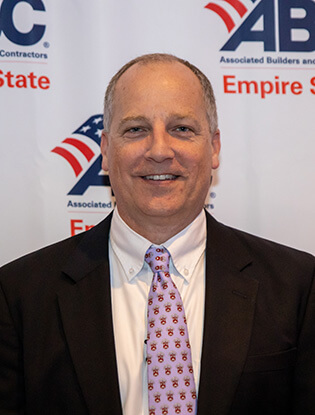
Brian Sampson, President of ABC’s Empire State Chapter
Aug. 23, 2022 A Letter to the Editor by Brian Sampson, President, ABC’s Empire State Chapter
Recently, actor and now New York City real estate developer Robert De Niro has come under fire for using open shop labor to build a studio complex in Astoria.
There have been large protests outside of the construction site calling for De Niro to use only union labor on this project, not the open shop labor he hired.
In response, De Niro’s spokesperson said: “We support a diverse and inclusive workforce and feel it’s essential not to exclude non-union workers from being awarded our construction jobs.”
By opening opportunities to non-union workers, De Niro is honoring the statement above and ensuring the workforce reflects the community in which the project is being built. The Construction Workforce Project, which represents the interests of minority construction workers in New York City, has released data this year showing that on 82 major open shop projects – employing 74,000 individuals – 82 percent of the workers live in the five boroughs, and 87 percent are black or Hispanic workers. That is the makeup of the open shop construction workforce in New York City and these are the individuals that will be out of jobs if the union protests are successful.
Construction in New York City is a path to the middle-class: an opportunity that should be open to everyone. In the union world, that isn’t necessarily the case, especially in New York City. That path is still predominantly for white males, compared to the open shop industry that employees a high rate of minority workers.
Today more than 70 percent of the significant private projects over 10 stories are being built by open shop contractors and the reason is very simple. These contractors perform safe, quality work and their workforce accurately reflects the demographics of the communities they are building in. Whereas union workers, in large part, commute into New York City from Long Island, Westchester, Pennsylvania, and New Jersey.
What has happened for this project is what should happen on all construction projects: the owner picked the most qualified and capable contractor who also employs individuals from the community to build the job, regardless of labor affiliation. This project has the potential to create thousands of jobs that should be filled by as many individuals from the five-boroughs as possible.
ABC’s Empire State Chapter, the more than 400 member contractors it represents, and the hundreds of thousands of workers they employ, strongly support Robert De Niro’s choice to diversify the workforce on his project by providing opportunities for both union and non-union individuals.
*The Empire State Chapter of Associated Builders and Contractors, part of a national construction industry trade association established in 1950, was founded on the merit shop philosophy. ABC Empire State Chapter helps its more than 400 members develop skilled tradesmen and women, submit winning bids for work and deliver that work in a safe, ethical and timely manner for the betterment of the communities in which ABC and its members work. Visit ABC at abcnys.org.
One Comment

This is just Demiro’z way of saying it is cheaper to use non.union.lsbpr.